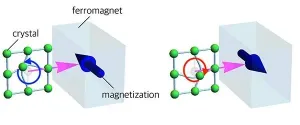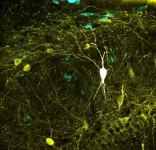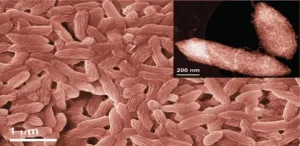New microscopy method reaches deeper into the living brain
Imaging method poised to bring new insight into how the brain works in health and disease
2021-05-27
(Press-News.org) WASHINGTON -- Researchers have developed a new technique that allows microscopic fluorescence imaging at four times the depth limit imposed by light diffusion. Fluorescence microscopy is often used to image molecular and cellular details of the brain in animal models of various diseases but, until now, has been limited to small volumes and highly invasive procedures due to intense light scattering by the skin and skull.
"Visualization of biological dynamics in an unperturbed environment, deep in a living organism, is essential for understanding the complex biology of living organisms and progression of diseases," said research team leader Daniel Razansky from the University of Zurich and ETH Zurich, both in Switzerland. "Our study represents the first time that 3D fluorescence microscopy has been performed fully noninvasively at capillary level resolution in an adult mouse brain, effectively covering a field of view of about 1 centimeter."
In Optica, The Optical Society's (OSA) journal for high impact research, the researchers describe their new technique, which is called diffuse optical localization imaging (DOLI). It takes advantage of what is known as the second near-infrared (NIR-II) spectral window from 1000 to 1700 nanometers, which exhibits less scattering.
"Enabling high-resolution optical observations in deep living tissues represents a long-standing goal in the biomedical imaging field," said Razansky. "DOLI's superb resolution for deep-tissue optical observations can provide functional insights into the brain, making it a promising platform for studying neural activity, microcirculation, neurovascular coupling and neurodegeneration."
Achieving greater depth
For the new technique, the researchers intravenously inject a living mouse with fluorescent microdroplets at a concentration that creates a sparse distribution in the blood stream. Tracking these flowing targets enables reconstruction of a high-resolution map of the deep cerebral microvasculature in the mouse brain.
"The method eliminates background light scattering and is performed with the scalp and skull intact," said Razansky. "Interestingly, we also observed strong dependence of the spot size recorded by the camera on microdroplet's depth in the brain, which enabled depth-resolved imaging."
The new approach benefits from the recent introduction of highly efficient short-wave infrared cameras based on InGaAs sensors. Another key building block was the use of novel contrast agents exhibiting strong fluorescence responses in the NIR-II window, such as lead sulfide (PbS)-based quantum dots.
Crisp and clear imaging
The researchers first tested the new technique in synthetic models of tissue known as tissue phantoms that mimic average brain tissue properties, demonstrating that they could acquire microscopic resolution images at depths of up to 4 millimeters in optically opaque tissues. They then performed DOLI in living mice where cerebral microvasculature as well as blood flow velocity and direction could be visualized entirely noninvasively.
The researchers are working to optimize precision in all three dimensions to improve DOLI's resolution. They are also developing improved fluorescent agents that are smaller, have stronger fluorescence intensity and are more stable in vivo. This will significantly boost DOLI's performance in terms of the achievable signal to noise and imaging depth.
"We expect that DOLI will emerge as a powerful approach for fluorescence imaging of living organisms at previously inaccessible depth and resolution regimes," said Razansky. "This will greatly enhance the in vivo applicability of fluorescence microscopy and tomography techniques."
INFORMATION:
Paper: Q. Zhou, Z. Chen, J. Robin, X.-L. Deán-Ben, D. Razansky, "Diffuse optical localization imaging (DOLI) enables noninvasive deep brain microangiography in NIR-II window," Optica, 8, 6, 796-803 (2021).
DOI: https://doi.org/10.1364/OPTICA.420378.
About Optica
Optica is an open-access, journal dedicated to the rapid dissemination of high-impact peer-reviewed research across the entire spectrum of optics and photonics. Published monthly by The Optical Society (OSA), Optica provides a forum for pioneering research to be swiftly accessed by the international community, whether that research is theoretical or experimental, fundamental or applied. Optica maintains a distinguished editorial board of more than 60 associate editors from around the world and is overseen by Editor-in-Chief Prem Kumar, Northwestern University, USA. For more information, visit Optica.
About The Optical Society
Founded in 1916, The Optical Society (OSA) is the leading professional organization for scientists, engineers, students and business leaders who fuel discoveries, shape real-life applications and accelerate achievements in the science of light. Through world-renowned publications, meetings and membership initiatives, OSA provides quality research, inspired interactions and dedicated resources for its extensive global network of optics and photonics experts. For more information, visit osa.org.
Media Contacts:
Aaron Cohen
(301) 633-6773
aaroncohenpr@gmail.com
mediarelations@osa.org
[Attachments] See images for this press release:

ELSE PRESS RELEASES FROM THIS DATE:
2021-05-27
Five years on from the first discovery of gravitational waves, an international team of scientists, including from the ARC Centre of Excellence for Gravitational Wave Discovery (OzGrav), are continuing the hunt for new discoveries and insights into the Universe. Using the super-sensitive, kilometre-sized LIGO detectors in the United States, and the Virgo detector in Europe, the team have witnessed the explosive collisions of black holes and neutron stars. Recent studies, however, have been looking for something quite different: the elusive signal from a solitary, rapidly-spinning neutron star.
Take a star similar in size to the Sun, squash it down to a ball about ...
2021-05-27
The hunt for the never before heard "hum" of gravitational waves caused by mysterious neutron stars has just got a lot easier, thanks to an international team of researchers.
Gravitational waves have only been detected from black holes and neutron stars colliding, major cosmic events that cause huge bursts that ripple through space and time.
The research team, involving scientists from the LIGO Scientific Collaboration (LSC), Virgo Collaboration and the Centre for Gravitational Astrophysics (CGA) at The Australian National University (ANU), are now turning their eagle eye to spinning neutron stars to detect the waves.
Unlike the massive bursts caused by black holes or neutron stars colliding, the researchers ...
2021-05-27
AMHERST, Mass. - New research by University of Massachusetts Amherst astronomer Daniel Wang reveals, with unprecedented clarity, details of violent phenomena in the center of our galaxy. The images, published recently in Monthly Notices of the Royal Astronomical Society, document an X-ray thread, G0.17-0.41, which hints at a previously unknown interstellar mechanism that may govern the energy flow and potentially the evolution of the Milky Way.
"The galaxy is like an ecosystem," says Wang, a professor in UMass Amherst's astronomy department, whose findings are a result of more than two decades of research. "We know the centers of galaxies are where the action is and play an enormous role in their evolution." And yet, whatever has ...
2021-05-27
Individuals with genetic high cholesterol, heart disease or both, who were infected with COVID-19 had more heart attacks according to new research by the FH Foundation. While previous studies have speculated about poorer outcomes if a person with genetic high cholesterol - called familial hypercholesterolemia (FH) contracts COVID-19, this study from the FH Foundation's national healthcare database is the first to demonstrate higher heart attack rates in the real world. Published online in the American Journal of Preventive Cardiology, the study also importantly confirms that COVID-19 increases heart attack rates in individuals with established atherosclerotic cardiovascular disease (ASCVD).
The FH Foundation performed an analysis of 55,412,462 individuals, separating groups into six ...
2021-05-27
Leesburg, VA, May 27, 2021--According to an open-access Editor's Choice article in ARRS' American Journal of Roentgenology (AJR), accurate prenatal diagnosis of severe placental accreta spectrum (PAS) disorder by imaging could help guide maternal counseling and selection between hysterectomy and uterine-preserving surgery.
"The findings suggest strong performance of placental bulge in diagnosing severe PAS on both ultrasound and MRI, with potentially relatively stronger performance on MRI," wrote corresponding author Manjiri Dighe from the department of radiology at the University of Washington School of Medicine. "Nonetheless, interobserver agreement remains suboptimal on both modalities."
On ultrasound and MRI alike, the placental bulge sign represents ...
2021-05-27
A small Japanese fishing community devastated by the Great East Japan Earthquake and Tsunami of 2011 managed to recover from the disaster through cooperative community activity despite the propensity for individualist-competitive behavior within fisheries - cooperative activity that continued many years later.
A social scientist who spent years interviewing fishers in the fishing hamlet of Isohama has discovered a long-standing continuum of competitive and collective endeavor amongst fishers, with potential ramifications for how government policy can better promote resilience in the wake of natural disasters and other calamities.
The findings appear in the journal of Disaster ...
2021-05-27
Using the circular vibration of surface acoustic waves, a collaborative research group have successfully controlled the magnetization of a ferromagnetic thin film.
Their research was published in the journal Nature Communications on May 10, 2021.
Essentially, acoustic waves are waves of atomic vibrations in a substance. When the waves propagate across the surface of a material, the vibration becomes circular. This circular motion, known as angular momentum, can help measure rotational motion.
Surface acoustic waves are utilized in bandpass filters in cell phones. The bandpass allows certain frequencies ...
2021-05-27
New Orleans, LA - A review study led by Maria D. Sanchez-Pino, PhD, an assistant research professor in the departments of Interdisciplinary Oncology and Genetics at LSU Health New Orleans' School of Medicine and Stanley S. Scott Cancer Center, advances knowledge about the connection between obesity-associated inflammation and cancer. The researchers suggest that inflammatory cells with immunosuppressive properties may act as a critical biological link between obesity and cancer risk, progression, and metastasis. The paper is published in the June 2021 issue of Obesity, available here.
Despite evidence showing that ...
2021-05-27
The study, which is published in the journal PLOS Biology, represents the most comprehensive mapping performed to date between neural activity recoded in vivo and identified neuron types. This major breakthrough may enable biologically meaningful computer modeling of the full neuronal circuit of the hippocampus, a region of the brain involved in memory function.
Circuits of the mammalian cerebral cortex are made up of two types of neurons: excitatory neurons, which release a neurotransmitter called glutamate, and inhibitory neurons, which release GABA (gamma-aminobutanoic acid), the main inhibitor of the central nervous system. "A balanced dialogue between the 'excitatory' and 'inhibitory' activities is critical for brain function. ...
2021-05-27
Exploiting the unusual metal-reducing ability of the iron-breathing bacterium Geobacter sulfurreducens, KAUST researchers have demonstrated a cheap and reliable way to synthesize highly active single-atom catalysts. The innovation, which could dramatically improve the efficiency and cost of hydrogen production from water, highlights the role nature can play in the search for new energy systems.
Many chemical reactions require a catalyst as a reactive surface where atoms or molecules are brought together with the right amount of energy to spark a chemical change. Water, for example, can be split into hydrogen and oxygen atoms by reacting on a pair of electrodes made of platinum and iridium oxide. The efficiency of the reaction, however, depends largely ...
LAST 30 PRESS RELEASES:
[Press-News.org] New microscopy method reaches deeper into the living brain
Imaging method poised to bring new insight into how the brain works in health and disease







